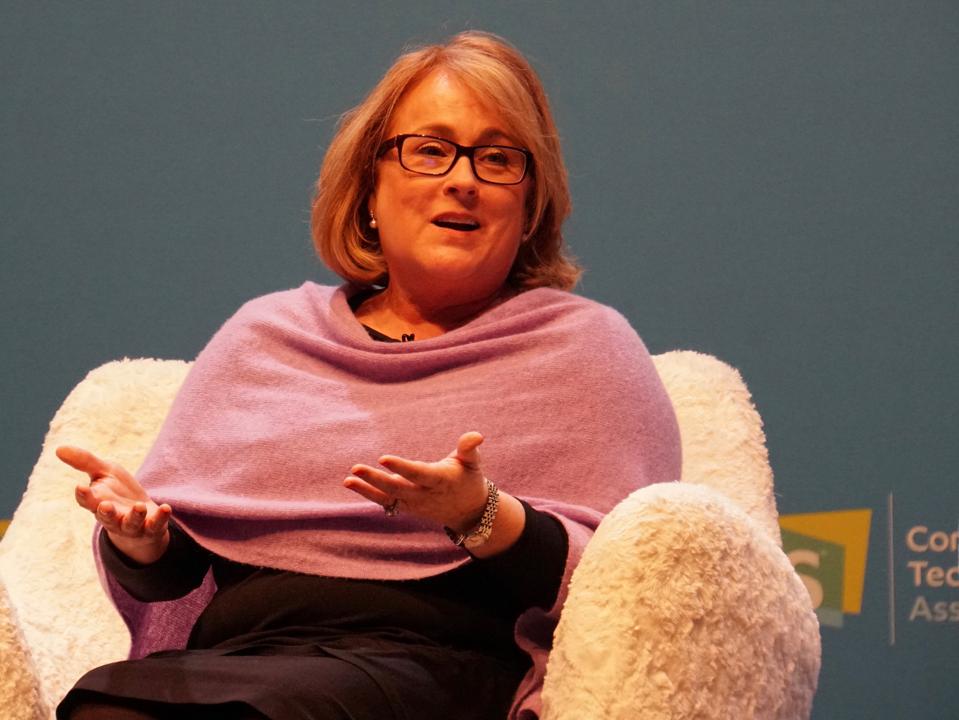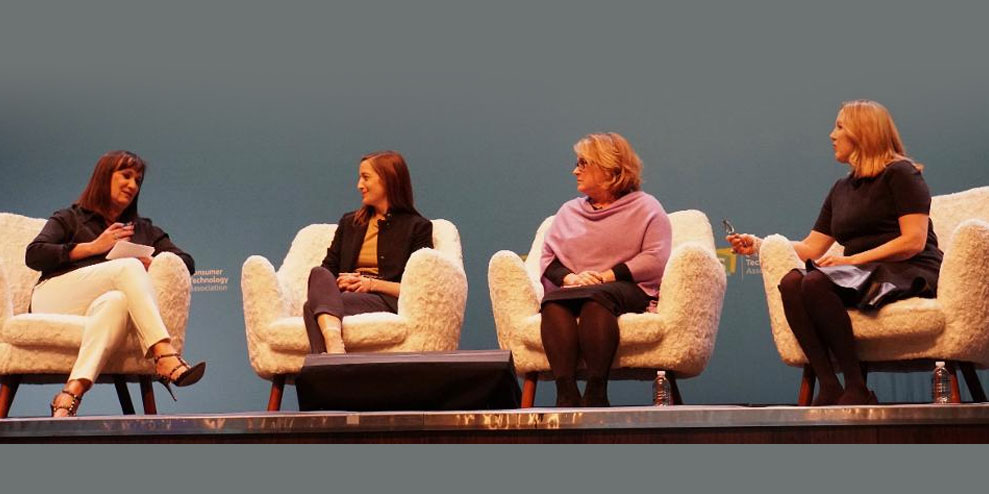This year’s Consumer Electronics Show (CES) attracted an increasing number of CMOs as technology continues to play an integral role in the transformation and disruption of the practice of marketing.
Headlining content included the CMO Insights content track, C-Space sessions, and other panel discussions on relevant subject matter including privacy, AI, 5G, product innovations, and more. Jean Foster, SVP of Marketing and Communications Officer of The Consumer Technology Association—the owners of CES, introduced most of the marketing-led sessions and moderated the opening CMO panel “Putting the C in CMO” with Diana O’Brien, Global CMO of Deloitte; Deborah Wahl, CMO of General Motors; and Jennifer Berman, CMO of Insider.
Diverse businesses to be sure, but these marketing leaders were remarkably aligned on their charge to grow the business whether it comes with the “chief” title or not. “I think we should stop talking about the title difference. It is about the spoken responsibilities of your work. If you have strategic thinking to bring to bear with customer insight that helps to drive your business forward, what you are doing is the most important job,” according to O’Brien. “Different organizations, I think, need to call it different things based on their maturity, based on the type of work that they do. And so, I’d like to get away from even the title, and just start talking about the scope, because the scope is cool, and I can’t imagine wanting to do anything else.”

Diana O’Brien, Global Chief Marketing Officer, Deloitte. MARYLEE SACHS
So why are marketing leaders increasingly flocking to CES? “Every company is a tech company,” said Foster. “You only have to walk around in CES, and you’ll see companies like John Deere, Delta Airlines….these companies are tech companies. You all represent brands that people wouldn’t think are traditional tech brands,” referring to the panelists.
CES is known for showcasing new products or services or tech-led extensions or features. But developments in communication and activation with customers is a big part of the show as well. “Whether we’re talking about 5G or AI, or privacy issues, it is about helping the navigating change piece of it. And being an organization that needs to be at the front of that, you have to be able to walk the walk yourself, right? You have to be an organization that can iterate really quickly and move quickly, and that’s where you’re learning that [at CES],” said Berman.

Jennifer Berman of Insider (right) with Jean Foster of the Consumer Technology Association (left). MARYLEE SACHS
According to Wahl, “The biggest change that I have seen is people getting really focused on using marketing technology, marketing ideas, marketing insights to really solve core business solutions, not just do the bling on it. I have no problem with that; I think we still need great ideas that are inspirational and wonderful, but it has to be related to solving that core problem.”
Harnessing technology to better connect to the customer was top of mind for CMOs attending CES. “But it is looking for what of those technologies, how we’re discovering it, and how we’re looking at it to provide delightful experiences. It’s the old marketing term, but it’s so much more meaningful today, because all the other stuff can be so crazy. And you’re seeing this ability for 5G to help vehicles speak to each other, speak to the infrastructure. We’re going to have a lot more ability to do what we kind of call, intuitive presponse. Not response, we want to use it to be ahead, and great,” said Wahl.

Deborah Wahl, CMO of General Motors. MARYLEE SACHS
“Every time you get in your car, how many of you have felt, ‘Oh my God, now I have to program my podcast, and then my directions, and I better set up when I call so that I’m not doing distracted driving, and now I can make sure that everything’s on?’ I think getting to the next level of that whole experience, is what all of the autonomous and 5G activity, et cetera is going to do. And then by the way, the other part of it is, keeping everyone safe,” Wahl continued.
It’s easy to get caught up in the ‘what’s next’ of technology and musings over its likely impact on marketing but ultimately, these CMOs were aligned on the role of marketing as increasingly playing a vital contributor to business growth. “The biggest switch is more to really solving the fundamental business problems with the strategies that you get to really understand the customer,” said Wahl. “And that has been through a very disciplined approach of understanding what consumers are desiring, and then staying maniacal about that discipline,” said Wahl.
Whatever’s next, the CMO will have a more important role regardless of title; but he or she will need to appreciate change and the speed of change. “The CMO needs to be a few steps ahead to continue to help to translate that, both internally and externally,” said O’Brien.
This article first appeared in www.forbes.com
Seeking to build and grow your brand using the force of consumer insight, strategic foresight, creative disruption and technology prowess? Talk to us at +9714 3867728 or mail: info@groupisd.com or visit www.groupisd.com




